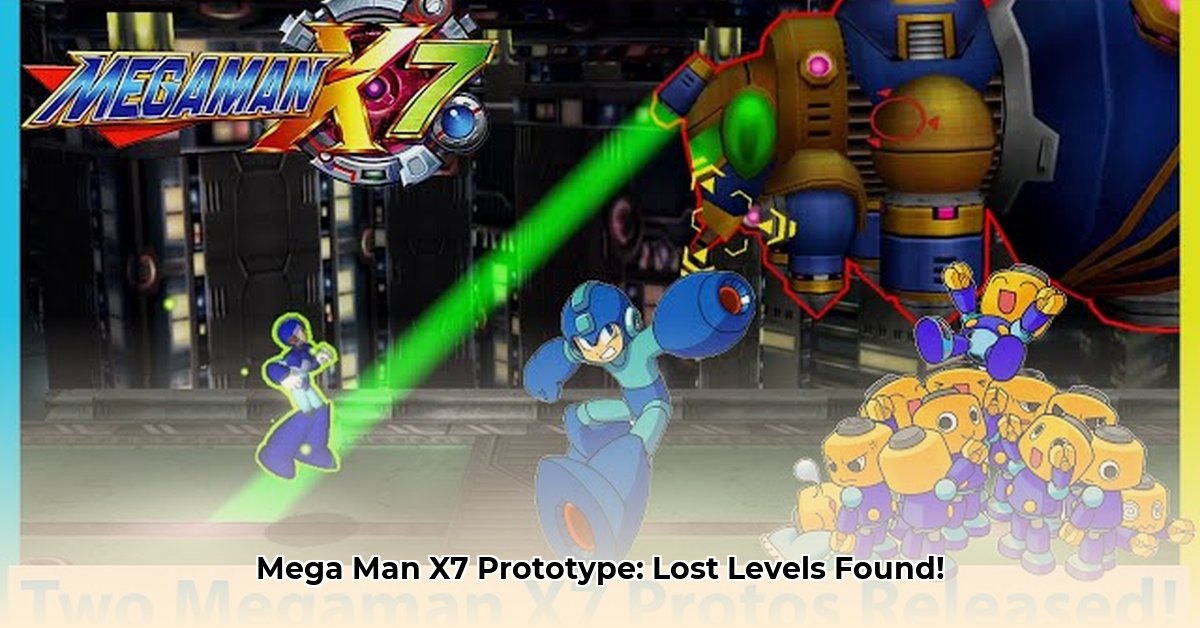
Unearthing Development Secrets: A Comparative Analysis of Mega Man X7 Prototypes
The evolution of Mega Man X7 from its initial conception to its final release is a compelling narrative revealed through the existence of several pre-release prototypes. This analysis compares these early versions—specifically the E3 2003 build and a later US pre-release build—to the final product, highlighting significant design changes and offering insights into the development process. Accessing and analyzing these prototypes provides a unique perspective on the challenges and decisions involved in bringing a complex video game to market. This analysis explores how level design, character roles, and technological limitations shaped the final release.
The E3 2003 Build: A First Glimpse
The E3 2003 build, showcased between May 9th and 11th, 2003, offered a limited but revealing experience. Four playable levels were available: Highway, Battleship, Deep Forest, and Lava Factory. However, a notable difference immediately presents itself: the inclusion of a "Tank Farm" stage entirely absent from the final game. This omission suggests significant alterations to the game's scope and structure during development. The early English translation found in this build is notably rough, indicating the ongoing localization process at this early stage of development.
Pre-Release US Build: Refining the Experience
A later US pre-release build of Mega Man X7, with a currently unknown release date, shares some commonalities with the E3 build (the Highway stage, for instance, appears in both, though with minor environmental and enemy placement variations). The "Tank Farm" stage also remains present. However, a notable evolution emerges: the character of X has a significantly expanded role and involvement in the narrative, indicative of changes in the game’s overall direction and potentially the inclusion of further missions. The rough English translation persists but is still indicative of ongoing refinements before the official release.
Comparing the Builds: Key Differences and Implications
The discrepancies between the prototypes and the final release provide crucial insights. The "Tank Farm" stage's removal suggests rigorous playtesting and design decisions based on player feedback or development constraints. Minor changes in enemy positioning and attack patterns within existing levels point to balancing adjustments and refinements made throughout development. The increased role for X reflects a strategic shift in the narrative or structure of the game. The prototypes also highlight the iterative nature of game development where aspects of the overall game design (for example, how the environments are designed and character dynamics) were refined based on playtesting and feedback.
The "Tank Farm" Enigma: A Lost Level's Significance
The "Tank Farm" stage, missing from the final product, represents a valuable piece of information about the game's conceptual development. Its absence underscores the complexities of decision-making in game design and the compromises often involved in reaching a final product. Studying this incomplete content provides significant insight into how different aspects were considered and eventually discarded due to various reasons, such as playability issues, development resource constraints, or shifts in the game's overall focus.
Analyzing Prototypes: Beyond Gameplay Considerations
Analyzing Mega Man X7 prototypes extends beyond mere gameplay comparisons. Observing changes in polygon count, frame rate, and level design reveals the ongoing technical optimization undertaken during development. Evolution in character models and animations reflects refinements related to the capabilities and limitations of the underlying game engine. This demonstrates the iterative and problem-solving nature of game development, a process characterized by continuous adjustments to both the game's content and its underlying technical architecture.
Future Directions: Uncovering Further Insights
Further research opportunities exist. A detailed code analysis may reveal discarded game features or provide more context to the design decisions that ultimately shaped the final version of Mega Man X7. Preserving and studying these prototypes serves not only as a historical endeavor but also as a valuable resource for future game developers, offering lessons learned and insights into different game development approaches. The analysis of these prototypes might lead to a better understanding of the design choices during development and the reasoning behind many of the choices.
Key Differences at a Glance
| Feature | E3 2003 Build | Pre-Release US Build | Final Version |
|---|---|---|---|
| Playable Stages | Highway, Battleship, Deep Forest, Lava Factory, Tank Farm | Highway, Battleship, Deep Forest, Lava Factory, and potentially others | All stages, excluding Tank Farm |
| X's Role | Less prominent | More central role | Less prominent role in storyline |
| "Tank Farm" Mission | Included | Included | Removed |
| Language | Early English translation | Early English translation | Polished English, complete voice acting |
Accessing and Analyzing Mega Man X7 Prototype Data
Researchers and enthusiasts can access information from the Mega Man X7 prototypes through dedicated game preservation websites such as Hidden Palace and The Cutting Room Floor. These archives provide valuable resources, such as ROM images, for analysis and further research into the game's developmental history. This access requires technical expertise in handling ROM images and analyzing game files. However, the rewards, including a deeper understanding of the game design processes and decisions, are substantial.
⭐⭐⭐⭐☆ (4.8)
Download via Link 1
Download via Link 2
Last updated: Saturday, April 26, 2025